Saigon Botanical Gardens
And thoughts about Agent Orange and Asian orchids on one very long train journey
Wild Coelogyne nitida orchid growing in a Cloud Forest
My first venture out into the streets of Ho Chi Minh City from my hotel, shortly after checking in, was what I thought would be a relaxing stroll to the Botanical Gardens; it was only about a mile away and in the same area, District 1, as where I was staying. But this was probably one of the least leisurely walks I have ever done.
Whilst it was quite fun dodging the scooters that drove up onto the pavements, and not too bad having to walk on to the busy road to get round the parked bikes, potholes, and little chairs and tables that spilled out from the cafes and restaurants, trying to get across a road was hell. There were hardly any pedestrian crossings and traffic mostly ignored the few that were there. For ages I just stood at the edge of the roads, waiting for a pause in the thousands of motorbikes whizzing past me. But as I watched other people stride into the middle of it all, I realised that I was going to have to do the same or I would be idiotically standing there all day, and never get to the gardens before they closed. I waited till someone else was about to cross and then walked indecently close to them, one eye closed, trying to ignore all the swerving around me and somehow got to the other side. I started to get more confident at this at last with relief I saw the sign for “Saigon Zoo and Botanical Gardens,” but it was on the far side of a crazy busy duel-carriageway! How I crossed that final road I don’t know, but I felt very fortunate to get to there in one piece.
It was swelteringly hot and I just needed to sit down somewhere quiet and shady with a drink. To my dismay I discovered there was no cafe or anywhere to buy water in the gardens. The ticket office woman gestured to somewhere back on the other side of the duel carriageway. She must have noticed my sweaty face drop, for she then said “wait here,” and yelled at an old man sitting on a box outside the gates. The poor guy got up and strolled languidly into the middle of the mad traffic. After a few minutes he returned with an ice-cold bottle of water. I thanked them both profusely; not many places where you’d get that service!
I asked the woman at the booth if I could buy a Garden only ticket, (as I really don’t like zoos), but was told that it was all in one. I had read how the zoo is purportedly one of the oldest in the world, having been there since 1869, (not a claim I felt worth shouting about), and that it’s aim is to protect endangered species, (better), but being bang in the centre of a dense and polluted city where there just can’t be sufficient space for tigers, giraffes and large birds, I was not at all tempted. A visit to Cairo Zoo and Botanical Garden in the late '80’s had been a most miserable experience which I vowed never to repeat. I would just have to try and avoid the cages.
Fortunately most of the compact but luscious garden was slightly separated from the animals and moreover, with its 1800 trees, provided plenty of protection from the blistering sun. Although only 50 acres, zoo included, it’s the largest Botanic Gardens in Vietnam with the greatest number of different plant species. There is a good collection of native plants including 20 different species of orchid. Being quite small, there is no capacity for expansive lawns, grand vistas or a panorama of forest, but nevertheless, the gardens have charm and intrigue with the plethora of tropical plants and trees through which narrow paths lazily wind, inviting you to discover what is hidden beyond. Indeed it felt like a garden bursting at the seams with such an assortment of leaf and frond, providing every shape and size of sculptural interest in all the varying shades of green. Palms, ferns, Cannas, Cordylines and Crinums, were punctuated by blasts of flamingo-pink Bougainvilleas, ruby Acalyphas, maroon Alpinas and yellow and vermillion Heliconias.
Shady and serene Saigon Botanical Gardens, Ho Chi Minh City
The many trees of interest included Barringtonia acutangula, commonly known as the Itchy Tree or the Sea Poison Tree; the bark is an opioid painkiller but the sap can irritate the skin, and the poisonous seeds are used to stun fish in streams. It was also nice to see a Bauhinia purpurea, (Purple Orchid Tree, but obviously not related to orchids!). The bark of this is used amongst other things as a poison antidote, the leaves can be crushed into a cough medicine, and the flowers are eaten as laxatives. A shame it wasn’t in flower.
Bougainvillea sp over Arch
I enjoyed getting a bit lost, which is always a good sign in a small garden like this, exploring paths that led to little streams, ponds, a Topiary Garden, a Bonsai Garden, a Japanese Garden, the Orchid house, a Cacti house and a tiny arboretum. As it was late in the day I decided to not venture into the maze in case I got properly lost; there were not many people about and I didn’t fancy spending the night there, especially after seeing signs to the Crocodile Pond and the Snake Aquarium. Luckily, the only animals I saw were made of stone or shrub, although I just missed going into an aviary, momentarily mistaking it for a beautiful, if somewhat dilapidated, glasshouse.
Animal sculptures in front of Ravenala madagascariensis (Traveller’s Palm)
Animal topiary
Path to the Aviary, bordered by Acalypha hispida (Red Hot Cat Tail) (left) and Crinums, Cannas, Cordylines, Alpinas and Heliconias (right)
Alpina purpurata, (Red Ginger) and Heliconia psittacorum (Parakeet Flower)
Orchids grow abundantly in Vietnam as they do across South East Asia. It is very common to see them in temples, where they are one of the many plants used as offerings to Buddha, or hanging in baskets outside cafes and shops, or tied to trees and fences outside people’s homes. I read that the orchid flora of Vietnam is probably the richest among all the other regional floras of mainland Asia, and that there are 1180 documented species from 170 genera growing here. The largest genus in Vietnam is Bulbophyllum, of which Vietnam has 151 species. Unfortunately some orchids here are at risk of extinction as there does not appear to be a fully operational protection programme in place. I read about a man called Van Sy who has become a billionaire (in Vietnamese Dong) by selling orchids from his enormous collection; he apparently has thousands of species, many of which he collected directly from the forest. I hope he has been collecting responsibly but from what I read of his Van Sy Orchid Garden, he is a responsible seller. There is a thriving black market in orchids here which has caused people to buy fake and counterfeit ‘rare’ orchids and get into all sorts of trouble, including into billions of dong of debt!
The Orchid House with Dendrobium nobile and Oncidium althissimum
Not surprisingly the Orchid House was locked, so I could only peer through the window at the extensive collection in the Botanic Garden.
I got such enjoyment from wandering in this peaceful oasis on my first day in Ho Chi Minh City. It is always a bonus to have a proper garden in a city centre, something that Manchester notably lacks, although the tiny new Mayfield Park is a start.
The following day when I was at the War Remnants Museum, I was poignantly reminded of the Botanic Gardens; they seemed very symbolic in light of the fact that so much of Southern Vietnam was sprayed with the defoliant Agent Orange during the Vietnam War, or the American War as it is known here in Vietnam. Up to 44% of land was destroyed which amounted to 500,000 acres of crops and 5 million acres of upland. One of the most devastated areas was the mangrove forests of the Mekong delta, which were completely stripped bare. The US eradicated all this forest in order to “hunt out” and expose the Viet Cong, but of course millions of people, including children, were then afflicted by Dioxin, the highly toxic chemical in Agent Orange. 4.8 million people were exposed to the chemical and 400,000 Vietnamese people perished. It is estimated that 1 million Vietnamese suffered from, and continue to suffer from, dreadful debilitating disabilities and illnesses as a result of exposure.
Dioxin is known as a persistent organic pollutant or POP, because once it is in the environment it takes such a long time to break down. The US stored their supply of Agent Orange at Bien Hoa Airport, just 16 miles East of Ho Chi Minh City. Bien Hoa, once a suburb of Ho Chi Minh City, is now an industrial centre and the sixth most populated city in Vietnam. Despite this, it is one of the most toxic places on earth. There have been attempts to clean it up but the chemical still flows in streams and down the hillsides of this neighbourhood causing ongoing health problems to the people who live here.
Defoliated forest. Photograph, War Remnants Museum, Ho Chi Minh City
Photograph, War Remnants Museum, with explanatory note.
The forests, at least, seem to have recovered; I subsequently visited the Mekong Delta mangroves where Nypa Palms and other mangrove trees are thriving. I also saw a Jackfruit tree, with a large fruit on it which was new to me. The main environmental problem now appears to be the invasive water hyacinth which innocently floats about in the brown Mekong waters but causes all sorts of issues, not least getting caught up in the engines of boats, as happened to me on one boat trip; but it was quite fun getting rescued by fishermen in canoes.
Nypa fruitcans (Nipa Palm or Mangrove Palm), Mangrove forest today, Mekong Delta
Artocarpus heterophyllus (Jackfruit)
I saw much of Vietnam from a window when I decided, on what I subsequently realised was a mad whim, to embark on the 1021.5 mile journey from Ho Chi Minh City in the South to Hanoi in the North, by train. For 37 hours this very long, thin country passed me by and I spent quite a few of those hours looking out the window; my most enduring memory is the greenery of it all. On one side were mountains covered in dark forest up to their peaks bursting out of the flat plains of rice paddies and fields of sugar cane. On the other, quite a long stretch was dramatic coast, and both sides dotted with little villages and duck ponds.
I had been allocated a top bunk for the entire journey which I was surprised to find had to be my seat as well as my bed for the two days. I was a bit disappointed as I had already discovered from a long train journey in Thailand that top bunks are never great on sleepers as your view out the window is so limited. Also, it is not very comfortable to sit all day up there, and no table to use. Fortunately the two old men on the lower bunks, my fellow cabin passengers for a fair bit of the journey, were happy for me to sit on the end of their beds! And for at least a good 4 hours on the first day I had a lower bunk and table to myself.
Woman in the rice paddy field (viewed from train)
Neither of the two old fellows, nor our fourth companion, a middle aged man, spoke any English at all so there wasn’t much sensible conversation going on, at least not with any contribution from me. Initially they all seemed somewhat bemused by my presence; I learned later that it is considered slightly odd for a woman to be travelling alone in Vietnam. I certainly felt a like a bit of an oddball! But they were friendly enough and helped me find coffee and suggested which food I should buy from the sellers that wandered up and down the narrow corridors with all sorts of interesting looking products. I was a little wary of the food at first as I couldn’t think of a worse place to get a stomach problem. Eventually, however, I succumbed to hunger and bought some hot spicy roll things. Strangely the Restaurant Carriage had no food for sale, but it was nice to sit on the benches in there and I spent time talking to the only other tourists on the train, two lovely young students from India. I assume most tourists are much more sensible than me and fly if they want to get from Ho Chi Minh City to Hanoi without a break.
My fellow cabin passengers (my bed - top left)
At around midnight the train made one of its many stops and the middle-aged man in our “sleeper” got off and was replaced by a woman, her husband and toddler. There was some discussion as to how they were all going to share one top bunk, which also seemed to involve one of the old men below being asked to move. Not surprisingly he adamantly refused. The Guard got involved and after a lot of talk, the husband left the woman and toddler on the top bunk and disappeared. I nearly tripped over him in the morning asleep on the corridor floor when I got up to to go to the toilet, which I was trying to avoid as much as possible, it being by no means the cleanest I have come across on my travels.
In the early hours of the morning the woman got the Train Guard in to complain about the air conditioning that was blasting out freezing air to us on the top bunks, despite the weather having dramatically changed to relentless rain. I was half asleep when she pressed her freezing hand on me to demonstrate how very cold she was. I readily tried to join in with the objections, but at least I had layers of clothes and a travel blanket. The Guard reluctantly agreed to move them somewhere else. I was a bit sorry to see her go as she was smiley and friendly and the toddler had been entertaining us all.
Sunset from the train
All of this was not quite the romantic train journey I had in mind when I booked my First Class ticket. But at least it was First Class; on my frequent excursions up and down the train over the two days, I felt very fortunate every time I passed the Second Class cabins, which were three bunks high on wooden slats. Third Class was just seats, not great to sleep on, but fine to sit for a while, so I sneaked in there when there was a space, although that was fairly infrequent, to get a break from the claustrophobia of the cabin.
The following morning one old man got off and was replaced by an English speaking chemist from Hanoi, who had done his PhD in Boston. He was very chatty, which helped me return from the brink of insanity. He was then replaced by an English-speaking Vietnamese mathematician who, he claimed, had a photographic memory. Then the other old fellow was replaced by a young Japanese tourist. I started to feel much more normal again and the remainder of the trip was good fun. We spent time comparing life in our respective home countries and discussing politics; the Vietnamese man shut the cabin door before elaborating on how he had no respect for the Vietnamese Government, and even then he spoke in a whisper.
All in all it was a very long journey that I certainly won’t forget and probably won’t repeat.
My friendly cabin mates on the train
There is little in the way of gardens in Hanoi, but I spent a great week there. There were some lovely trees around the City lakes and in the vicinity of “Uncle Ho’s” ‘cottage’ where he preferred to live and work, rather than the adjacent Palace. My next big trip to see unusual and protected plants was on Cat Ba, an island in the stunning archipelago of Halong Bay.
Hi Chi Minh’s ‘cottage’ in Hanoi Palace Gardens, surrounded by Palms, Taxodium distichum
I got a lift to Cat Ba National Park on the back of a motorbike, during which my helmet flew off into the road when the strap broke. My driver didn’t seem in the least surprised and fortunately it was an empty road and we just turned back, picked it up and carried on, this time with one hand on my head.
The National Park is on what is known as a karst landform which is where the soluble rocks of limestone and dolomite have dissolved and form unusual-shaped structures, caves and sinkholes. Halong Bay itself has obviously been invaded by the sea but the extraordinary islands that crop up everywhere have many different types of eco-systems and landscapes.
Kurst landforms, Halong Bay
Cat Ba is just one island in thousands. It is a touristy area but there seems to be quite a lot of ongoing conservation work and environmental education to encourage eco-tourism.
The path into Cat Ba National Park
Many plants in South East Asia grow as epiphytes on trees. I have seen epiphytic ferns growing wild everywhere in forests, but few orchids in the wild. Maybe I just wasn’t so good at spotting them, but you couldn’t have missed this Dendrobium (below) which was covering a number of trees, although unfortunately not in flower.
Tree covered with Dendrobium sp.
In the Angka Swamp Cloud Forest on the mountain, Doi Inthanon, in Northern Thailand, I was lucky to see the beautiful Coelogyne nitida orchid which had masses of velvet-white flowers with bright yellow labellums. In that forest every branch of every tree seemed to be a home for orchids, ferns, mosses and lichens, which made the forest feel magical and ancient, which indeed it is at 4300 years old. It had been noticeably much cooler going up to the summit of this damp, foggy mountain, so ideal growing conditions for Coelogyne nitida which needs a period of rest and cool temperatures in winter. Pine trees, Chittagong wood, Almonds and Oaks were some of the many trees hosting these epiphytes.
Coelogyne nitida in the Cloud Forest on Doi Inthanon, Thailand
Chukrasia tabularis, (Chittagong Wood) in the Cloud Forest, Doi Inthanon, Thailand
Many of the trees in the national park in Cat Ba, were usefully labelled. I thought that the Tufted Fishtail Palm was interesting. Luckily I didn’t try the fruit, which at first I mistook for dates. But I read that they are saturated with raphides which are strong irritants that cause damage to the skin due to their sharp needle-shaped crystals of calcium oxalate.
Caryota mitis (Tufted fishtail palm)
View from the peaks of Cat Ba National Park, Halong Bay
Heavily forested mountains of Cat Ba, Halong Bay, Northern Vietnam
One of the fruits on the Cat Ba National Park forest floor that I struggled to identify is below. Any suggestions welcome. I should have bought it back with me and split it open which may have helped. Hopefully one of the three different species of squirrel including the Giant Black Squirrel, that lives in the forest, had it for dinner.
Unknown fruit

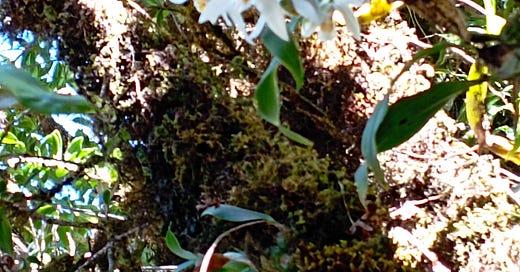



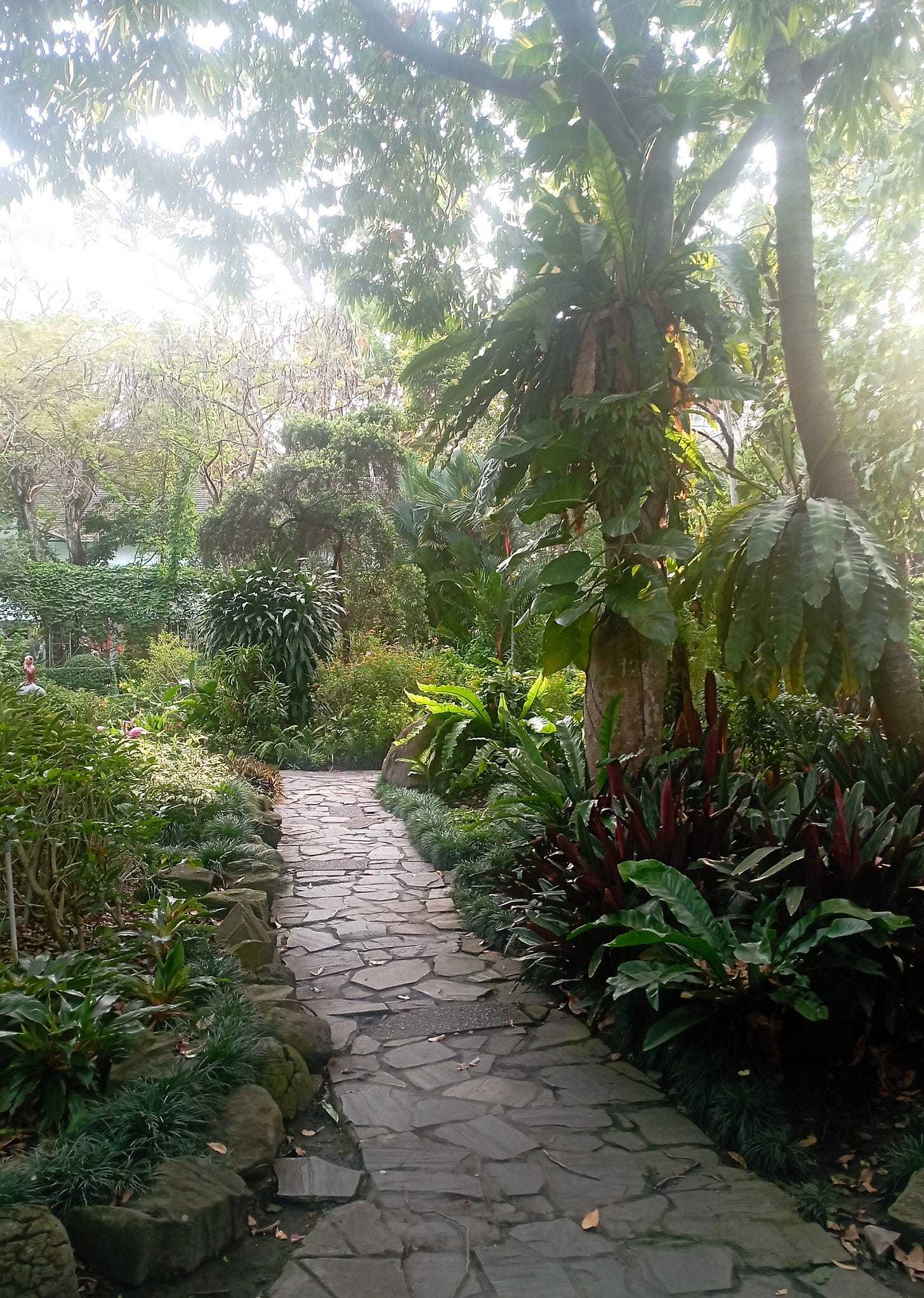
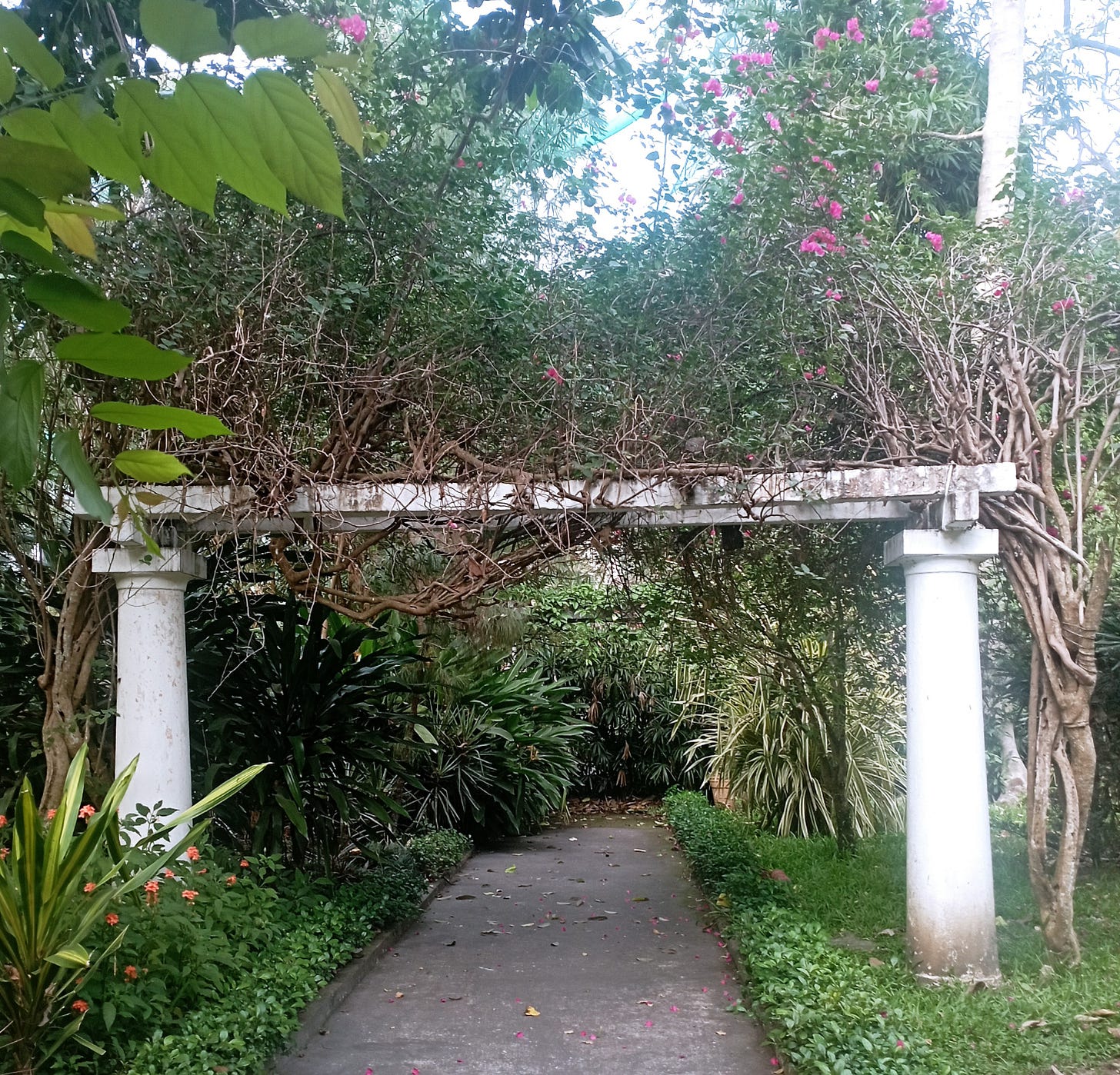

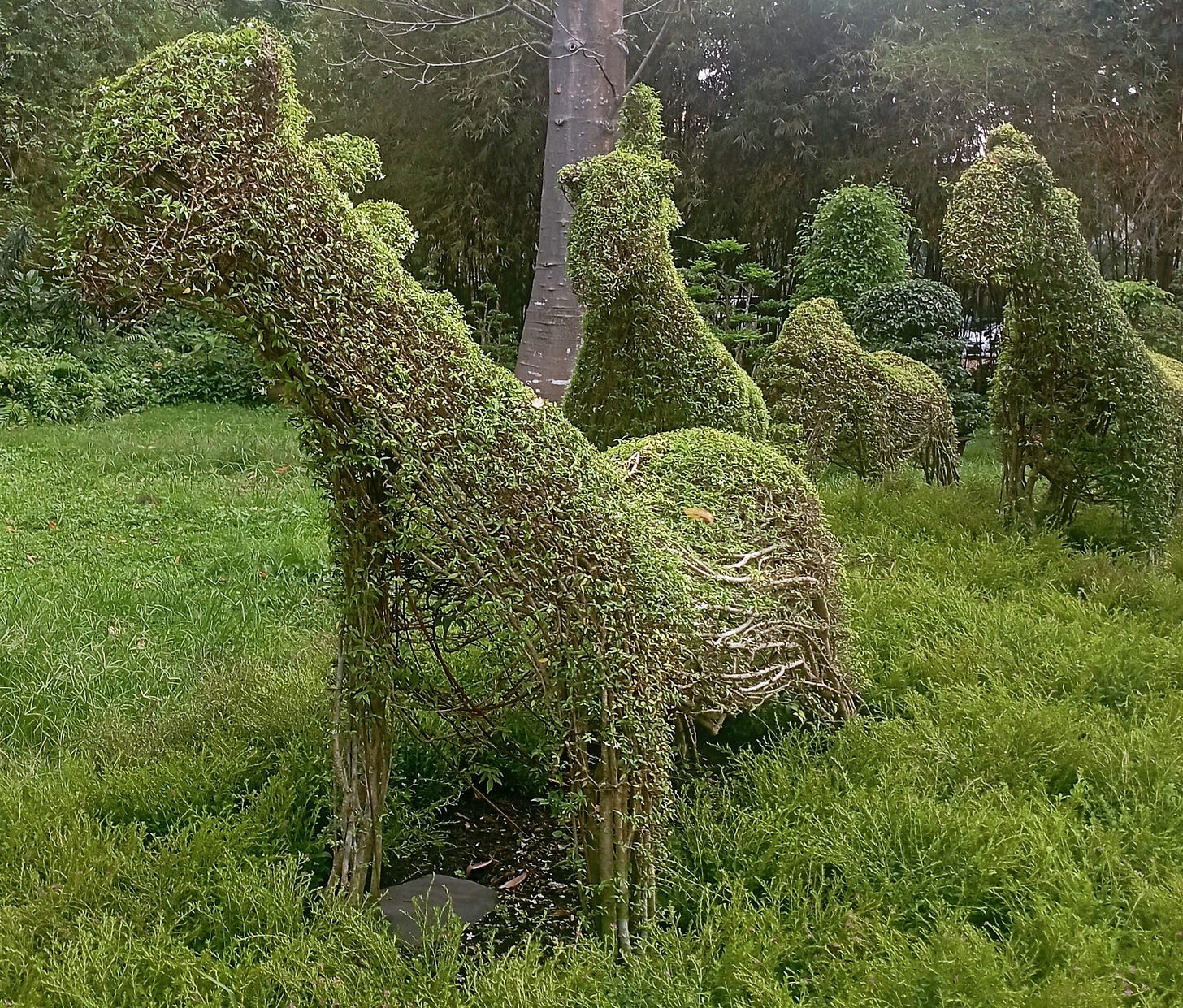
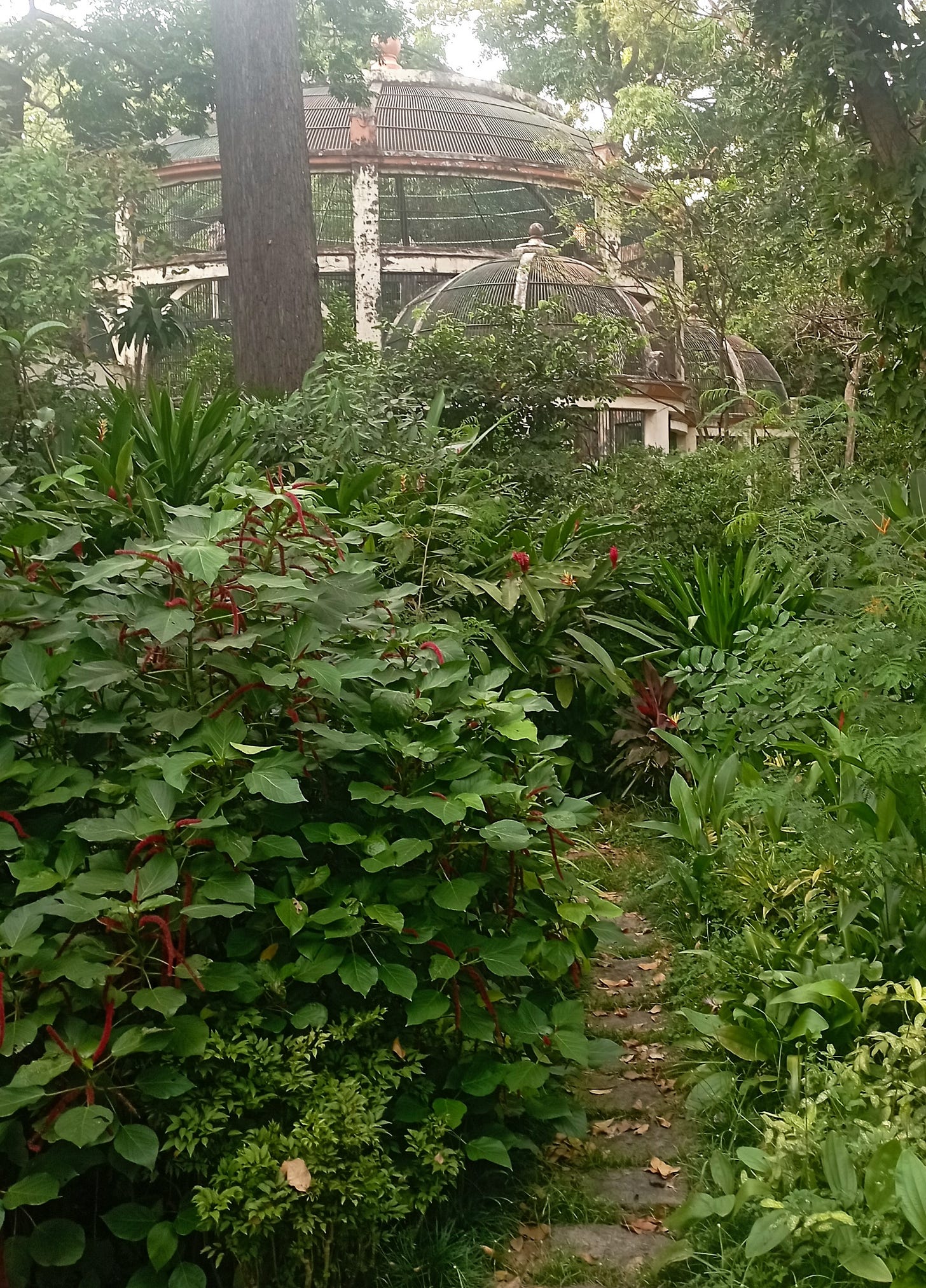


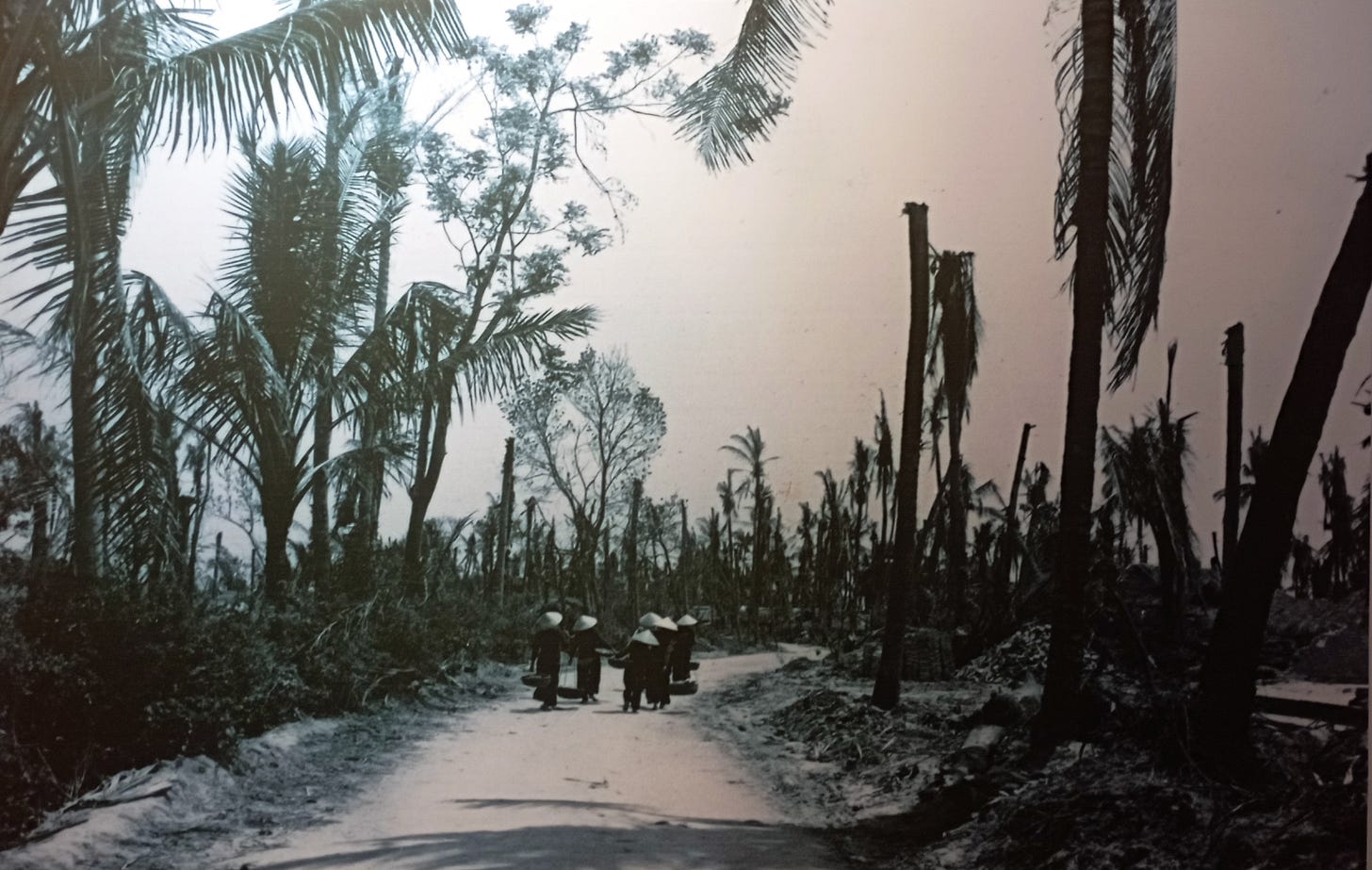


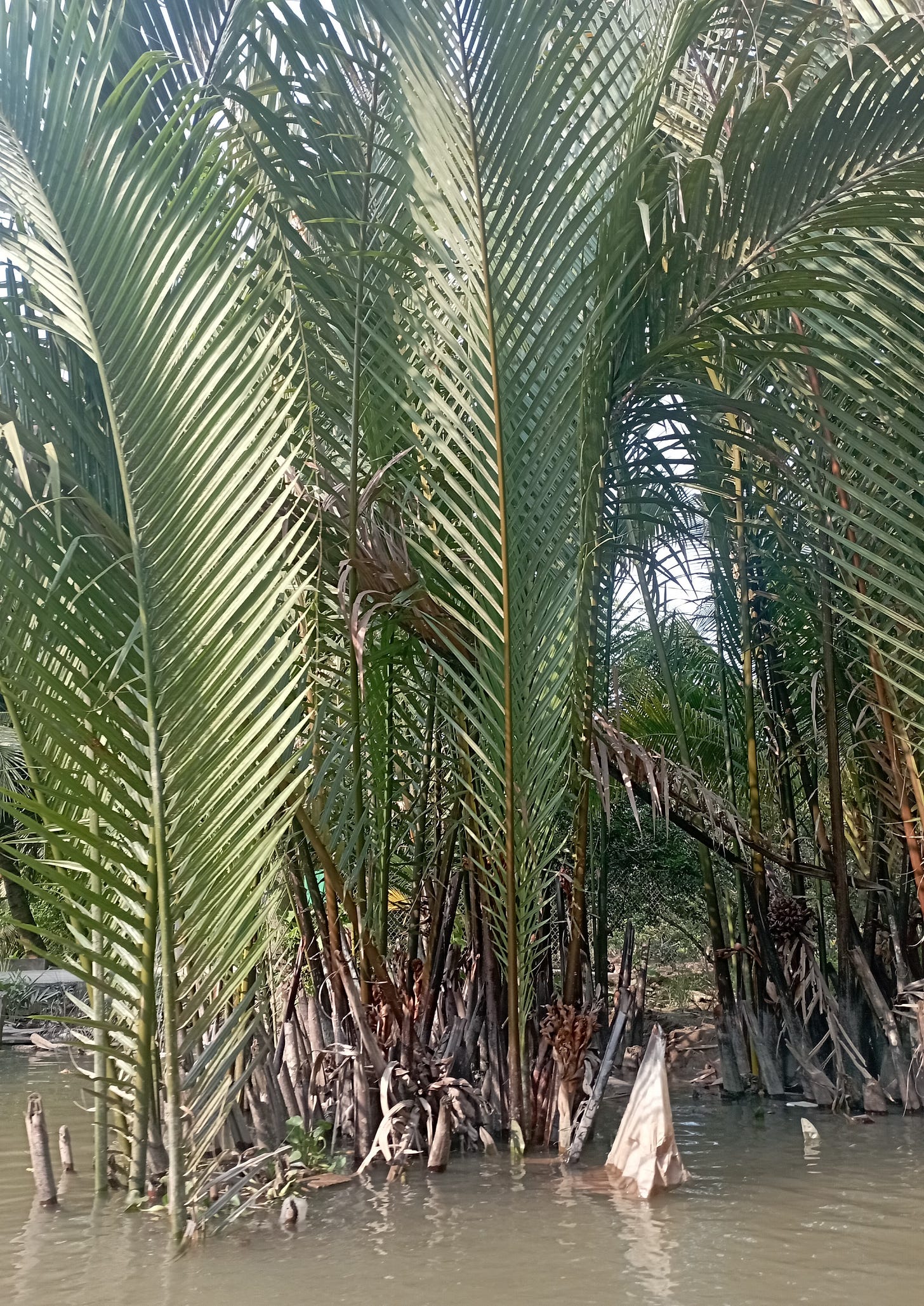


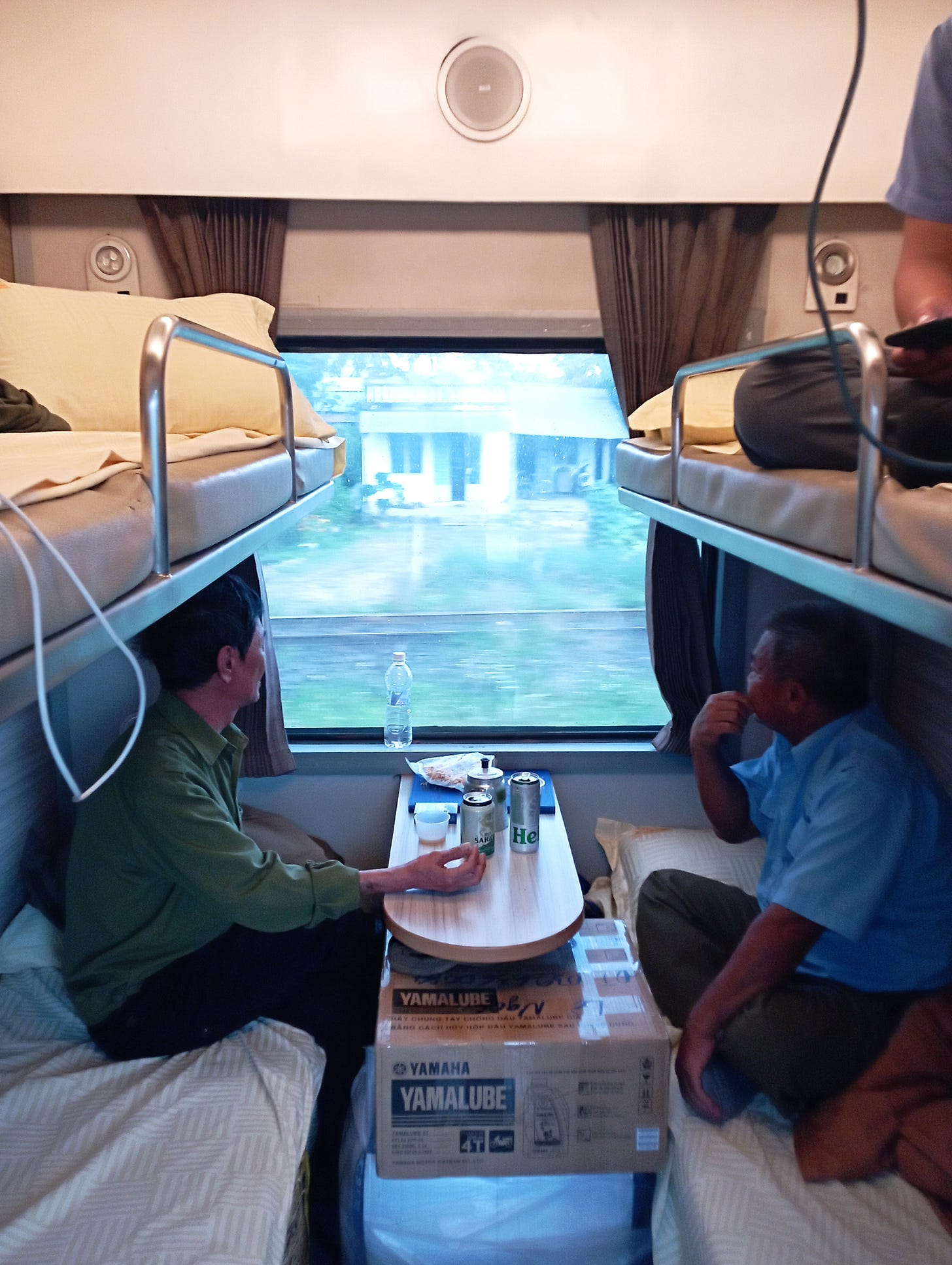


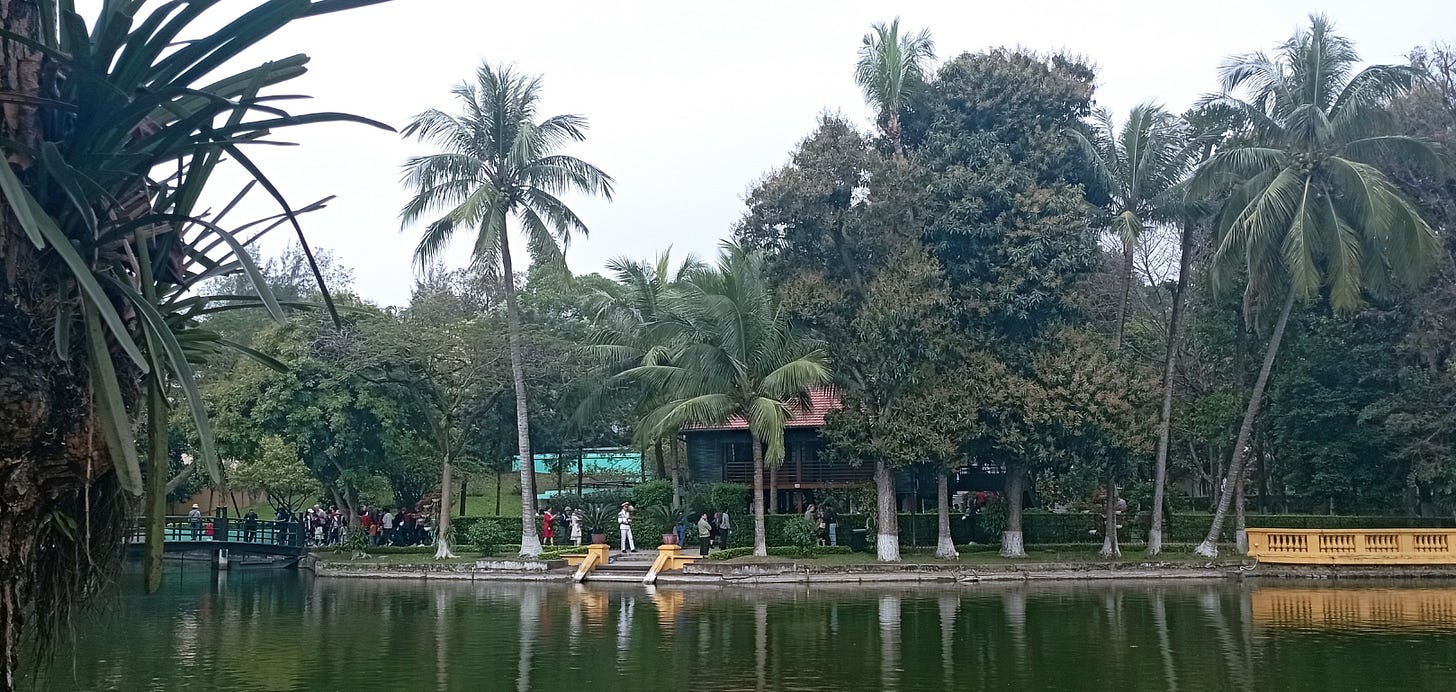

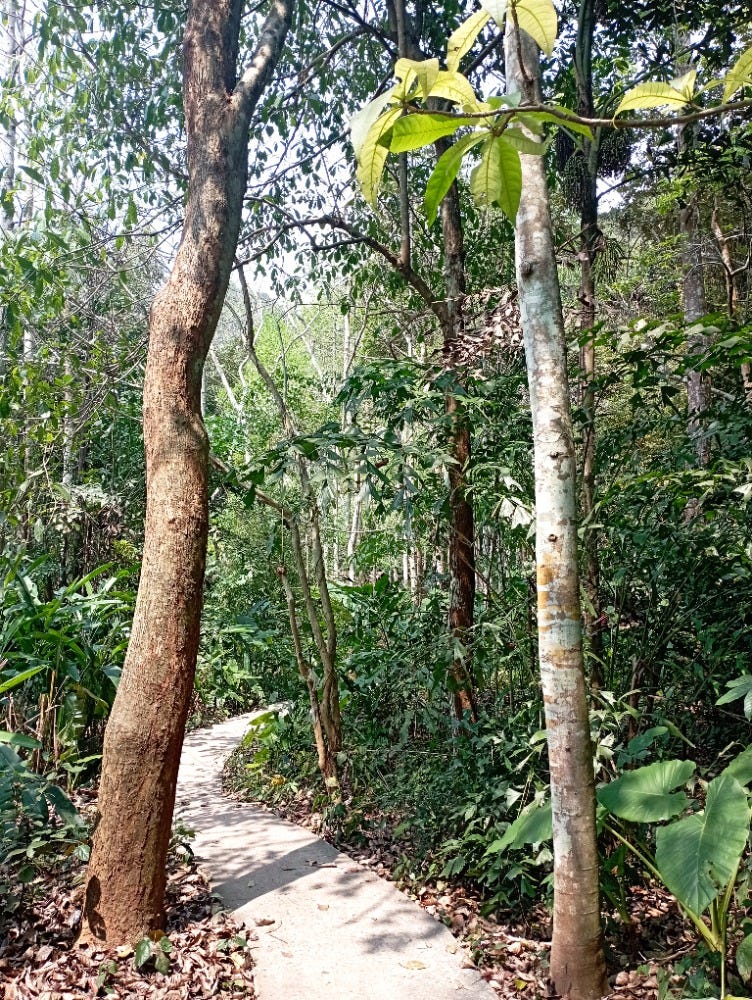




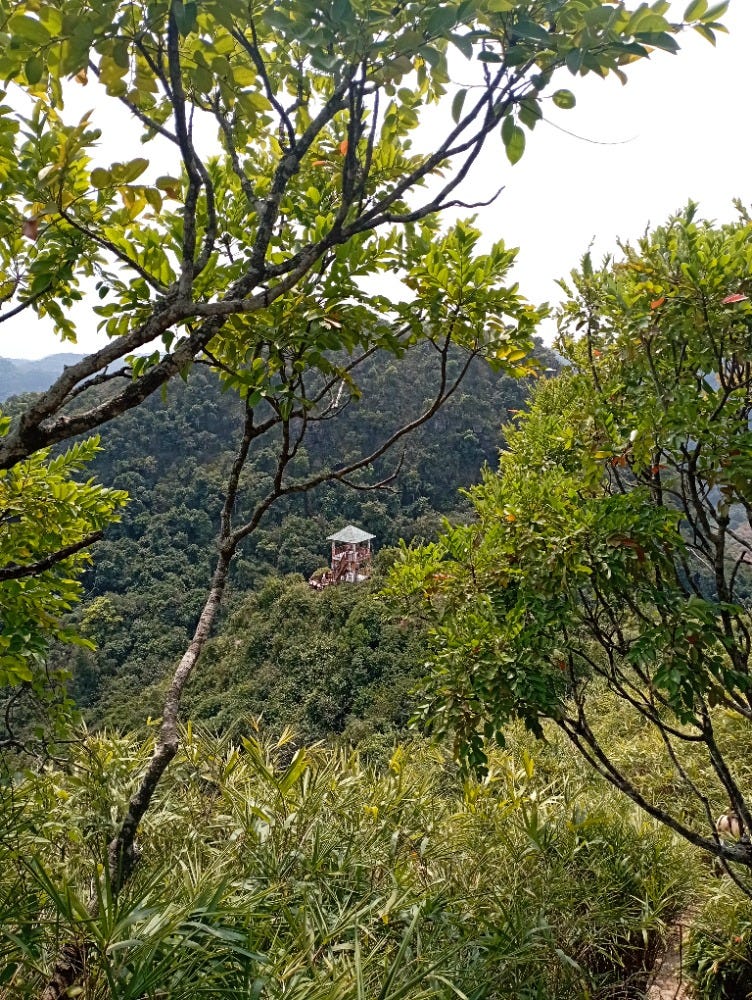

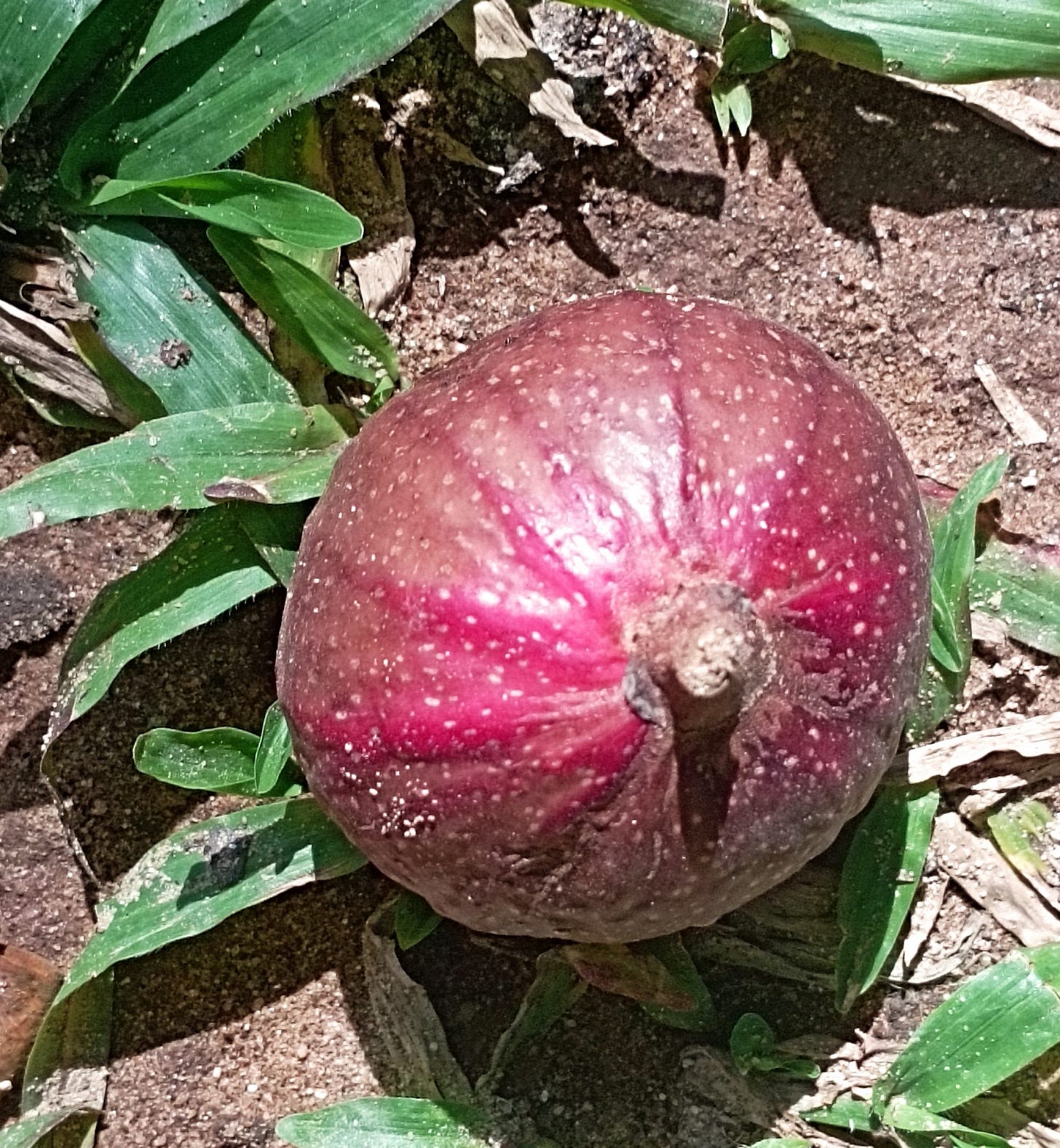
Yes someone else suggested it was Mangosteen. I think that could be it..
One of the things I've really enjoyed about your posts are the descriptions of your journey that are not strictly botanical. These create not only a real sense of suspense and immersion in another country but highlight and emphasise the splendour and importance of the gardens themselves. Your descriptions of plants are full of clarity, managing to create a sense of awe, while also offering expertise and knowledge.
Is the mystery fruit wild Mangosteen perhaps? Of course, this 'expert opinion' comes from looking online here in the UK, so you can take it for the guess that it is.